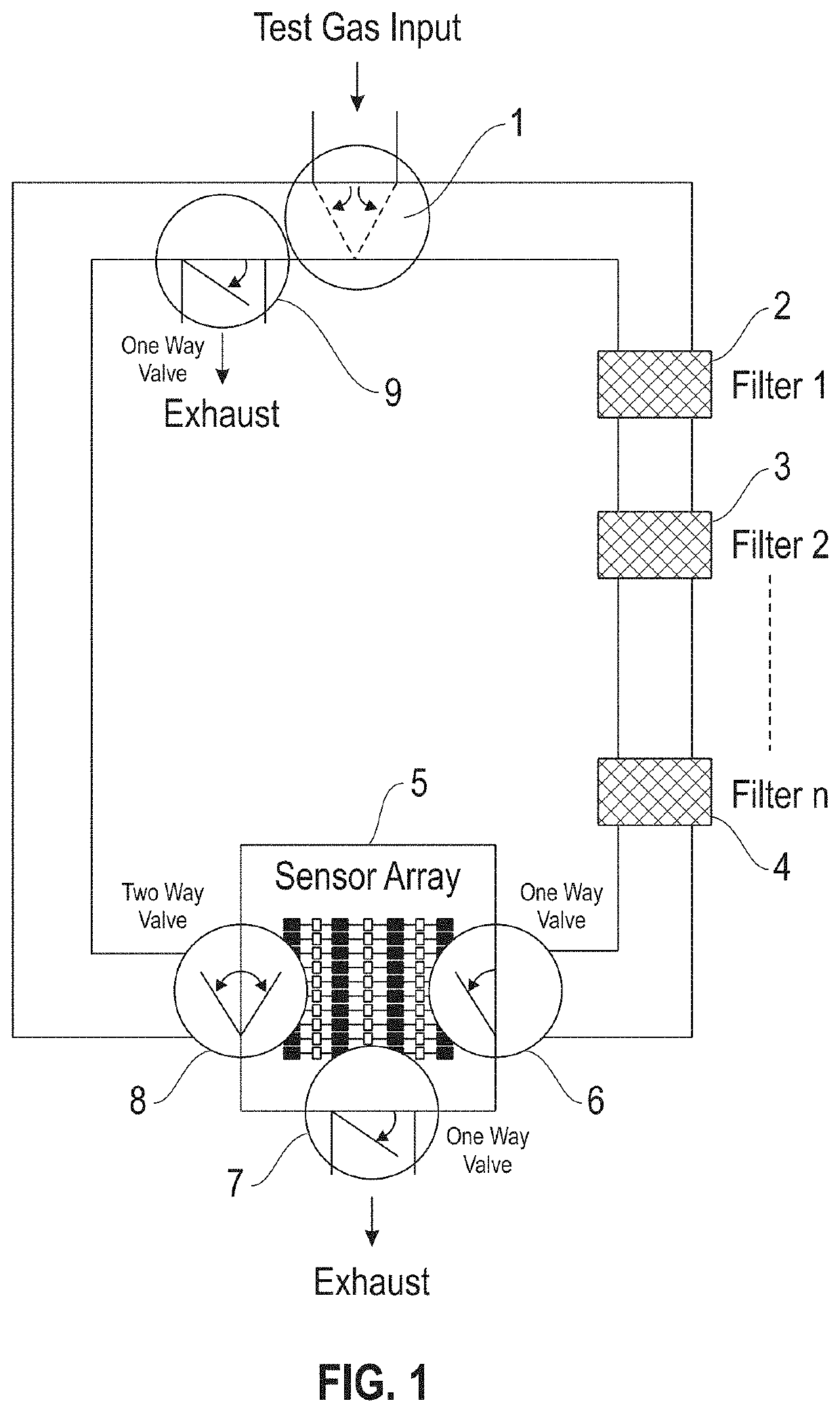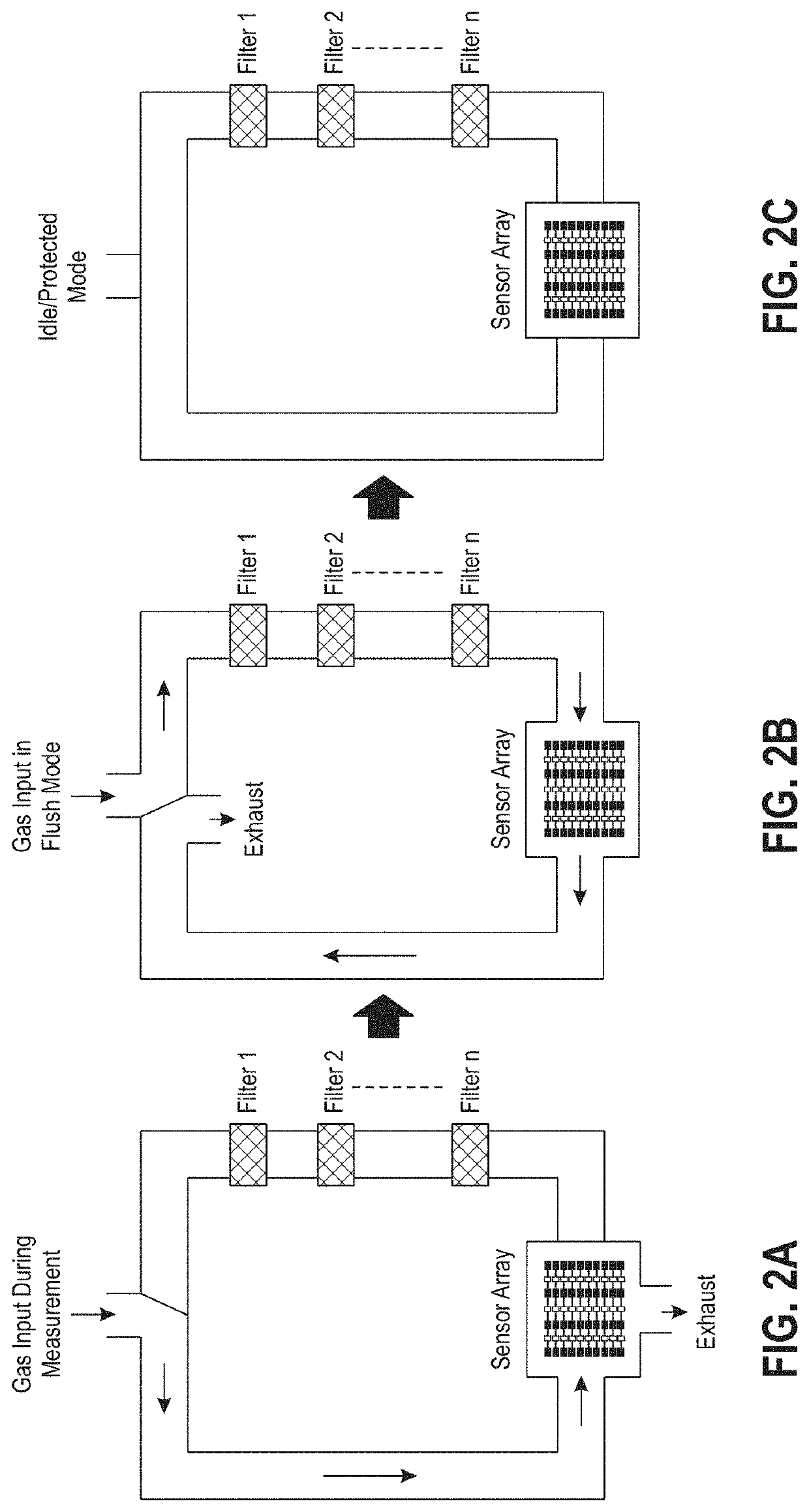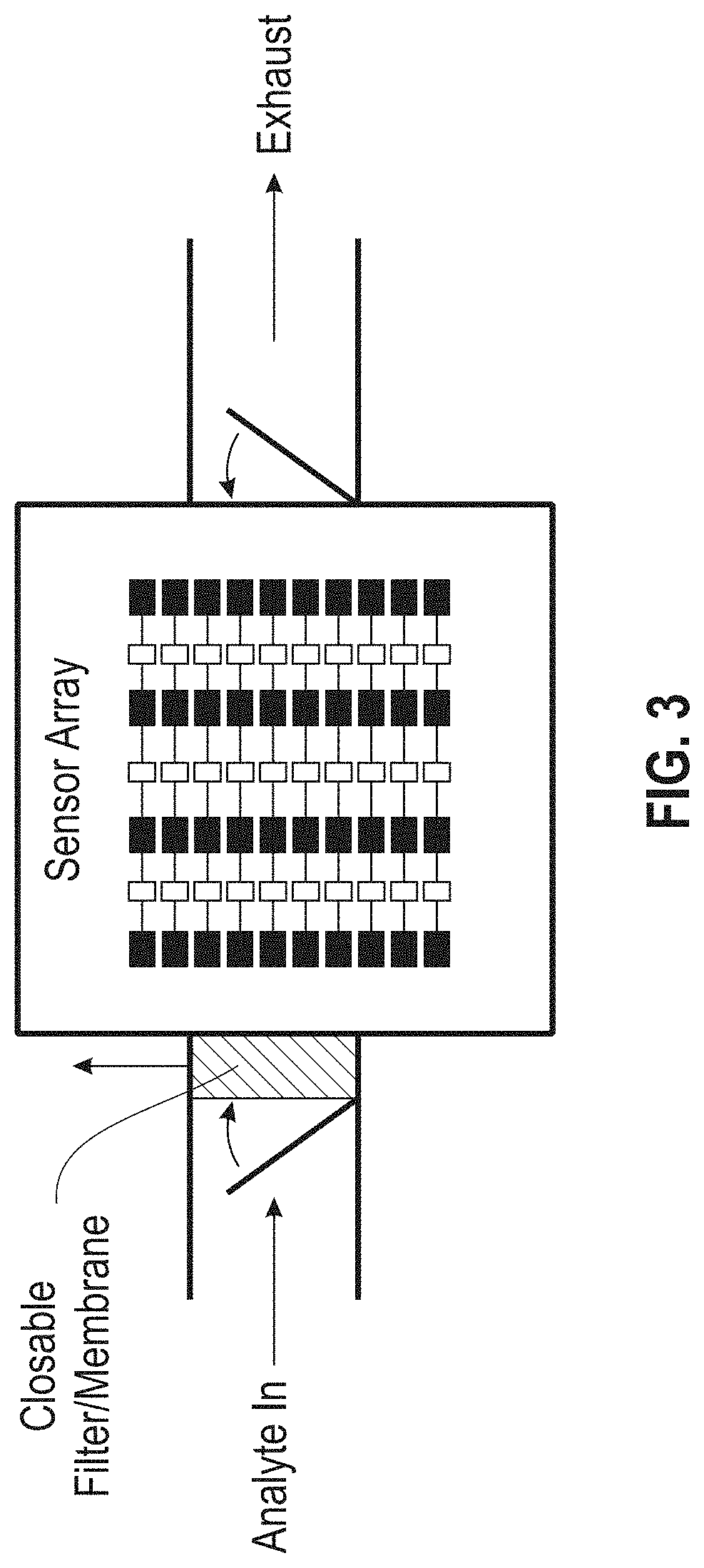Protective enclosure for gas sensors
a technology for protecting enclosures and gas sensors, applied in the field of gas sensors, can solve the problems of gas sensors undergoing changes in the morphology of sensing materials, electrical behavior, and degradation of electronic nose devices currently in use, and achieve the effect of preventing the escape of flushing gas
- Summary
- Abstract
- Description
- Claims
- Application Information
AI Technical Summary
Benefits of technology
Problems solved by technology
Method used
Image
Examples
example 1
Confinement Effect on Chemiresistive Ligated Gold Nanoparticle Sensors
[0061]To test the extent of degradation of chemiresistive ligated Au-NPs, 30 nm Au-NPs were functionalized with decanethiol or hexanethiol ligands and aged from 4 to 12 days in freely exchanging open-air and separately in a sealed 25 mL vial under air. Decanethiol-ligated and hexanethiol-ligated Au-NPs were also freshly prepared as pristine controls. The pristine, open-air, and sealed ligated Au-NPs were stamped on top of a gold surface for material characterization via SERS, XPS, and SEM and on top of interdigitated gold electrodes for resistivity / gas sensing measurements.
[0062]Material Characterization Tests:
[0063]SERS was used to test the degradation of the ligands surrounding the Au-NPs. Open-air and sealed decanethiol-ligated Au-NPs aged for five days and open-air and sealed hexanethiol-ligated Au-NPs aged for seven days were used for the tests (all ligated Au-NPs were stamped on a gold surface). The SERS spe...
example 2
The Effect of Excluding Deleterious Compounds on Chemiresisitve Ligated Gold Nanoparticle Sensors
[0070]To test for the presence of deleterious gases in a sensor environment, the following decanethiol-ligated Au-NPs stamped on top of a gold surface were tested via SERS: a pristine sample; an open-air sample aged for 24 hours; and a third sample exposed to a continuous stream of “zero-air” (i.e., a synthetic mixture containing 80% nitrogen, 20% oxygen, and no other species) for 24 hours. The SERS results shown in FIG. 8 confirm that the zero-air sample has a similar profile to the pristine sample indicating that the zero-air sample, like the pristine sample, had no ligand degradation. By contrast, the ambient air sample had a SERS spectrum indicating degradation of the protective decanethiol ligand by a substance in the open-air environment.
[0071]Since it is known that ozone can be responsible for Au—S bond degradation, ozone was added to the zero-air mixture by introducing an ozone g...
PUM
| Property | Measurement | Unit |
|---|---|---|
| time | aaaaa | aaaaa |
| time | aaaaa | aaaaa |
| volume | aaaaa | aaaaa |
Abstract
Description
Claims
Application Information
 Login to View More
Login to View More - R&D
- Intellectual Property
- Life Sciences
- Materials
- Tech Scout
- Unparalleled Data Quality
- Higher Quality Content
- 60% Fewer Hallucinations
Browse by: Latest US Patents, China's latest patents, Technical Efficacy Thesaurus, Application Domain, Technology Topic, Popular Technical Reports.
© 2025 PatSnap. All rights reserved.Legal|Privacy policy|Modern Slavery Act Transparency Statement|Sitemap|About US| Contact US: help@patsnap.com



